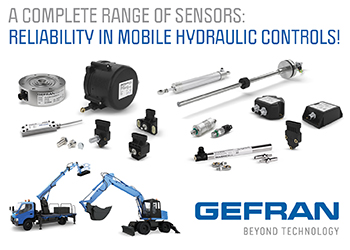Our attachments are designed optimally lighter to reduce fuel consumption during operation, lowering carbon emissions.
Indian economy has shown immense growth in recent times. We have overtaken many major economies and today in 2025 we are world’s 4th largest economy.

Sudip Kargupta
General Manager- Parts Business, HD Hyundai Construction Equipment India
How has the demand for construction equipment attachments evolved in recent years? What factors are driving the growth of this segment in India and globally?
Indian economy has shown immense growth in recent times. We have overtaken many major economies and today in 2025 we are world’s 4th largest economy.
One of the major driver of this growth is its Infrastructure and Industries. And this has resulted in significant increase in demand for construction equipment and allied attachments. The Indian government’s focus on infrastructure projects, such as the National Infrastructure Pipeline and PM Gati Shakti initiatives, River connectivity, drive for urbanisation like Smart Cities has significantly boosted the demand for construction equipment and their attachments.
An attachment gives versatility to the carrier machine. It creates the option to keep the carrier machine active for most of the time.
Investing in attachments compared to specialized machinery has proven to be a more economical solution for small and medium-sized contractors. Innovations such as smart attachments with integrated sensors and automation, like Hour Counters and Remote Monitoring have made these tools more efficient and user-friendly.
Attachments offer a cost-effective solution for contractors, enabling them to adapt to diverse project requirements without investing in multiple machines.
The rise of equipment rental markets has also made attachments more accessible, catering to diverse need of contractors.

What are the latest innovations in attachment technology?
Technological innovations primarily aim at safety improvement, higher efficiency, usage tracking, lesser human fatigue and being environmental friendly. As availability of skilled operators at construction sites remains a challenge across globe, the industries logical approach is to boost up automation.
HD Hyundai have integrated IoT-enabled Rock breaker operation data on exclusive Hi- Track portal, It’s a unique contribution in the mining and construction industries in India. By collecting real-time performance metrics, such as operational hours, Hydraulic Oil Temperature, and Over -Riding of breaker, the system allows customers & technical support team to monitor equipment health remotely. This data-driven approach helps in predictive maintenance, minimizing downtime, and reducing repair costs. The portal also provides detailed insights, optimizing the use of machinery and ensuring efficiency in operations. Additionally, owners/operators/engineers can track performance trends and make informed decisions, leading to improved productivity and longer equipment lifespan. Overall, IoT-enabled rock breaker data enhances operational efficiency, safety, and cost-effectiveness.
With advancements in AI, many attachments now have autonomous features, allowing them to perform tasks with minimal human intervention. For example, automated grading or trenching attachments are becoming very effective in self operation.
Electric-powered attachments like Magnet Attachment, for Ferrous Scrap movement, are gaining traction, offering quieter operation and reduced emissions, aligning with sustainable construction practices.
Which specific types of attachments are in high demand for applications like earthmoving, demolition, material handling, and road construction?
Here’s a breakdown of the specific types of attachments that are currently in high demand for various applications:
a) Earthmoving:
• Buckets: Essential for digging, trenching, and material handling. Variants include general-purpose, rock, and trenching buckets.
• Rippers: Used for breaking up hard soil or rock.
• Augers: Ideal for drilling holes for foundations or utility poles.
• Grading Blades: For levelling and grading surfaces.
b) Demolition
• Hydraulic Breakers: Used for breaking concrete, rocks, and asphalt.
• Pulverizers: Crush concrete and separate rebar for recycling.
• Demolition Shears: Cut through steel and other metals
• Grapples: Handle and sort debris efficiently.
• Rotary Cutters: For precise demolition in confined spaces.
c) Material Handling
• Forks: For lifting and transporting pallets and materials.
• Clamps: Securely hold irregularly shaped objects.
• Grapples: Versatile for handling logs, scrap, or waste.
These attachments enhance the versatility and efficiency of any construction equipment. The Return on Investment ranges from 4-5 months to an year.
How are you incorporating sustainable materials and eco-friendly design in attachments? What measures are being taken to enhance recyclability and reduce environmental impact?
HD HYUNDAI being a very responsible OEM in the construction equipment industry, are increasingly adopting sustainable eco-friendly practices to reduce environmental impact.
We are certified under ISO 9001:2015, ISO 14001, ISO 45001. These certifications boosts our confidence as a quality driven company with strong environmental responsibility. In our manufacturing lines we ensure strict adherence to employee health and safety rules. We have zero tolerance to unsafe acts and our safety team eliminates any potential risk for man or material on a proactive basis. Our attachments are designed optimally lighter to reduce fuel consumption during operation, lowering carbon emissions.
The Modular components designs makes it easier to replace parts, extending the lifespan of equipment and reducing waste.
In packaging and branding we give stress on using bio-degradable materials. The periodic meet with suppliers has a permanent agenda on how to give back to nature through innovations in packaging products and services.
We aspire to design all attachments with end-of-life recycling in mind, ensuring materials can be reused. The attachments fetch very attractive buy back price and change several user before withdrawn from market.
On alternative energy we have recently taken a great leap forward.
HD Hyundai launched the solar power plant in Kumbhari village of Solapur District which has a capacity of 2.51 MW AC. This is step forward in our journey to Zero Carbon Emission goals
By harnessing the power of the sun, this solar power plant is projected to reduce HD Hyundai’s carbon emissions by an impressive 4200 tonnes per year. To put this into perspective, this reduction is equivalent to planting over 20,000 trees (approximate) or taking 1,200 cars (approximate) off the road every.
We remains steadfast in its commitment to further reducing its environmental impact and forging a more sustainable future.
What are the key challenges faced in the development and adoption of advanced attachments?
The development and adoption of advanced construction equipment attachments face several challenges:
High Development Costs: Incorporating advanced technologies like AI, IoT, and automation increases R&D expenses, making it difficult for manufacturers to compete.
Skilled Workforce: Operating and maintaining advanced attachments require specialized skills, but the industry often struggles with a shortage of trained professionals. Continuous training is also needed as operators changes their jobs for growth and learning.
Integration with Existing Equipment: Ensuring compatibility with older machinery can be complex and costly, slowing down adoption rates. The seamless integration with an existing system may require involvement of several cross functional systems &
teams. If the technology is imported, it is required to comply with the law and regulation of country of deployment and may need special permissions and licenses.
Material Costs and Supply Chain Issues: This is applicable for current or future attachments & machines. Today the global economy is so interlinked that a small supply chain disruptions in availability or logistics can lead to much increased production costs and delays. We need to have reasonable foresight of the changing geo-political situations.








